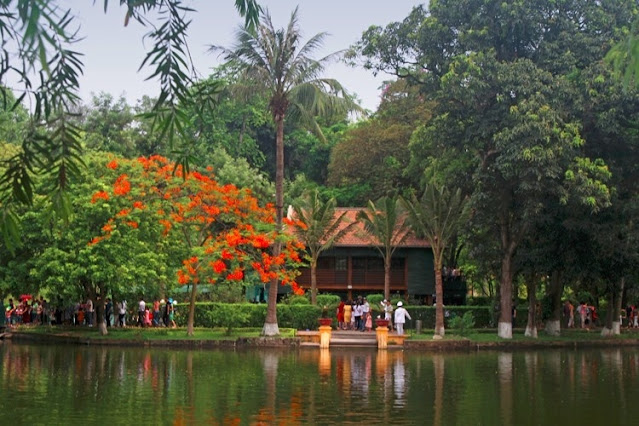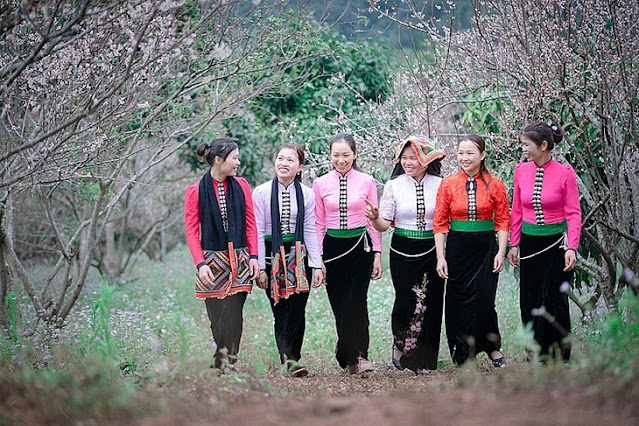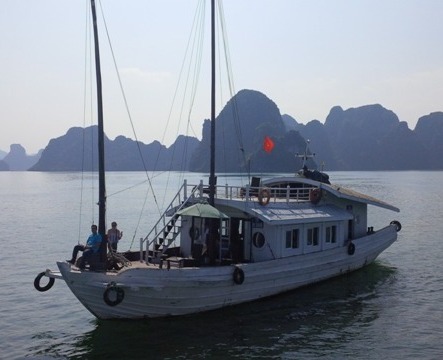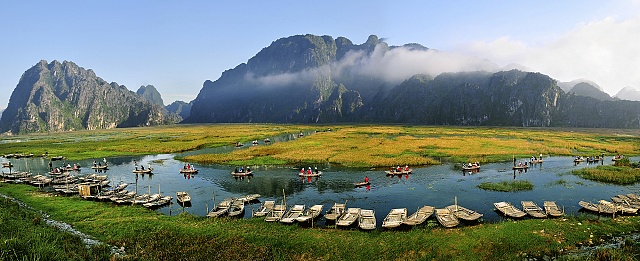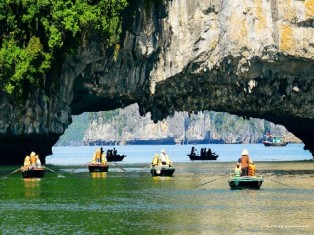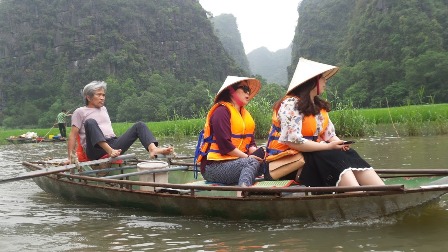(VOV) - Markets in Ha Giang always attract tourists because they are not just places for buying and selling, they are also meeting places for local ethnic minority people.
Wearing colorful costumes, all the different ethnic minority groups of the region come to the market to meet their friends, or their ex-lovers.
Early in the morning, Meo Vac district of Ha Giang province is blanketed with fog. All the roads to the markets are noisy with people calling one another as they make their way to the market, which meets only on Sunday. Local people in Meo Vac district are of the Nung, Dao, Mong, and Giay ethnicities. The market is both a trading center and a socializing center for local people.
Many different goods are on sale in the market. People come to the market to sell their farm produce and home-made products and buy clothing, plastic slippers, sandals, sport shoes and mobile phones. Here they also meet their friends and eat their favorite food.
Phan Thi Mui from the Red Dao group said, “I don’t have much money so I can only buy a few items. I brought rice to the market and can sell it for 1 million dong. I also go to the market to meet my friends”.
Visitors to Meo Vac market are impressed by the wine section, where local women stand in a long line selling corn wine. There’s an aluminum soup ladle by each can of wine which customers can use to taste the wine.
Italian tourist Malcro Cusani shared, “We have bought some dishes which can’t be found in Italy. We love to see the costumes of the local ethnic minority people. We have found some souvenirs for our parents”.
People go to Khau Vai market just to meet their ex-lovers. For more than 100 years, Khau Vai market has been known as a Love Market. Legends tell that an ethnic Giay girl from Ha Giang fell in love with a Nung boy from Cao Bang but their love was forbidden by both families.

They separated from each other and made an appointment to meet again on the 27th day of the third lunar month. The mountain where they dated has become a market place. The market meets once a year serving as a festival where people come to meet their ex-lovers.
Tho Mi Tha of Can Chu Phin commune, Meo Vac district said he waited for the Khau Vai Market festival all year to meet his ex-lover.
“I never miss a market festival. My marriage was arranged by my parents. But I have an ex-girlfriend. She is 5 years younger than me. It’s difficult to explain but I always wait for that day and will not return without meeting her.
The festival is held on March 27 but the night of the 26th is a memorable day in my life,” he added.
When they meet, the former lovers recalls their love stories although they might be married and have children now. They don’t return home until midnight.
Tha noted, “I live 10 km from the market. I come here by motorbike at 6 PM. We meet each other in the market. She is married already. We discuss the sad and happy events in our life during the past year. I wish I could have married her”.
The Khau Vai love market is also a place for boys and girls to seek partners. Many couples have been married after meeting at a love market session.
VOV5
























